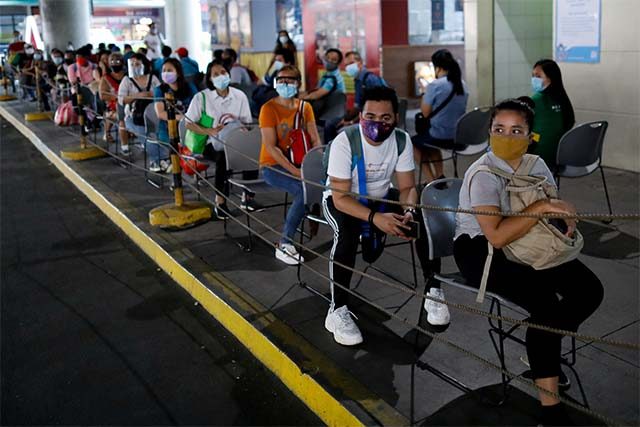
Trade Secretary Ramon Lopez claimed that reopening the economy did not contribute to the surge in COVID-19 cases despite the health secretary saying otherwise in a previous briefing with the president.
The trade chief in the latest briefing with President Rodrigo Duterte aired on March 24 said that the cases went down when the country loosened its economic restrictions last July.
“As the economy started to reopen in July last year, ‘yong COVID cases po bumababa,” Lopez claimed.
“So contrary po sa kinakatakutan ng marami na ‘pag nag-reopen ang economy, aakyat ang cases, pero po, ito po, statistics po ito, at talagang nangyari sa atin na habang nagbukas tayo last July at further reopening noong August… COVID cases started to go down until February,” he added.
“We reopened the economy since July 2020 and yet COVID cases went down. Dati ho 4,000 a day to below 2,000 a day. Ibig sabihin, kahit nag-reopen tayo, bumaba po ‘yong cases hanggang February,” Lopez further claimed.
He cited an official from the World Health Organization who said that cases in the country might have increased due to people’s “optimism” in the vaccination program.
But Health Secretary Francisco Duque III in a March 22 briefing said that the easing of the COVID-19 restrictions contributed to the fresh coronavirus cases spike.
He added that the eased restriction was inevitable as the country needed to recover from its economic downturn last year.
“Nag-luwag po tayo ng ating pong mga quarantines, ‘yon pong mga paghihigpit kasi nga no’ng dumaan ang Pasko, Bagong Taon, nakita naman po natin na mababa ang kaso natin, so nagluwag po tayo […] at binuksan din po natin ang malaking bahagi ng ekonomiya,” Duque said before.
“Nagdulot naman po ito ng increased mobility ng mga tao, at ‘yong increased mobility po ng mga tao, nagdulot din ng increased transmission, increased contact rate, kaya po nakita niyo exponential,” he added.
Meanwhile, some Filipinos disagreed with Lopez and recalled that the Greater Manila Area, a month after July 2020, was placed under modified enhanced community quarantine.
It is one tier stricter than the general community quarantine.
“Sorry to burst your bubble, but cases went through the roof in August, right after loosening protocols,” a Twitter user said, adding that a stricter quarantine phase was introduced at that time.
Metro Manila was supposed to see an extension of general community quarantine during that period but healthcare workers called for a two-week timeout in the form of an ECQ due to the rise of COVID-19 cases.
Early August last year, the country’s confirmed COVID-19 cases jumped to 100,000.
On Thursday afternoon, the Philippines reported a record high, 8,773 COVID-19 infections, bringing the total number of cases to 693,048. Of these, 99,891 cases are active.









